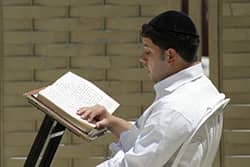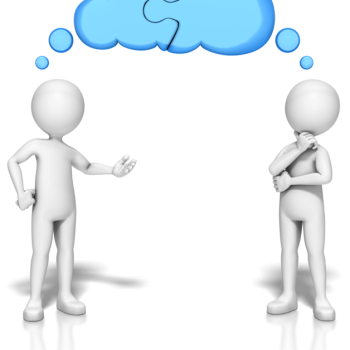 |
| paul prescott / Shutterstock.com |
They've come every year for the past several years—a Jewish youth group made up of local high school students, their parents, and their teachers—all eager to attend an LDS sacrament meeting and learn first-hand what a Mormon worship service is like. As usual, they arrive early. As usual, I greet them in the foyer. As usual, I review with them a few basic facts about Mormonism. And then, as usual, I lead them into the chapel, where they take their places in the two rows of pews our ward has reserved for them. A few of our Laurels and Priests wave to their Jewish friends and leave their customary seats to sit with them. I sit on the end of a row, with the rabbi.
Everything is in place for another pleasant and productive interfaith experience. And yet, I am still nervous. I never quite know what will happen during these visits, or what I will learn from them. Once a deacon passed the sacrament to our Jewish visitors despite their explicit request not to be invited to participate in any "confessional" activities. I froze, fearing someone would take offense. However, none of our visitors seemed concerned. They simply passed the tray down the row, calmly, carefully, even reverentially, without partaking, until it came to Rabbi Friedman. He then held the tray for me as I picked out a small piece of bread and ate it. After I had taken the tray and handed it to the deacon beside me, I apologized for the mix up. Rabbi Friedman smiled and leaned into me. "You know," he whispered, "that is the first time I have ever given communion to anyone." I laughed. Saved again by Jewish humor and good will.
We then turned our attention to the first speaker. She was well prepared and engaging, but I could not focus on her message. I kept thinking about Rabbi Friedman's comment, especially his use of the word "communion." It was not a term I usually employed to describe the sacrament. However, the more I thought about it, the more appropriate it seemed. Certainly, the sacrament encouraged a communion with God, but it also fostered a "commune-ity" of like-minded human beings. Simply holding the tray for another person, as Rabbi Friedman did for me, seemed to affirm the connection between us and to confirm the covenants both of us had made to serve others—his, to be "a light to the Gentiles" (Isaiah 49:6); mine, "to mourn with those that mourn and comfort those that stand in need of comfort" (Mosiah 18:9). That day a brief comment from someone from another faith taught me an important lesson about my own faith.
This day I am confronted with a similar comment—a question actually—that causes me to look more deeply into the Book of Mormon. After sacrament meeting concludes and after both youth groups, Jewish and Mormon, have reassembled in the cultural hall for a Q&A session, a young Jewish woman starts by asking us about the Book of Mormon—what it is, how it came to be, and why it is important to us. Our young people answer her questions honestly and openly, drawing upon what they have been taught as well as their own experiences. The young woman seems impressed, so much so that she then asks why, if the Book of Mormon is so miraculous and important, we don't read from it in our services, like Jews do the Torah in theirs.
Since our young people do not know how Jews read the Torah in their services, they turn to me. But I don't have an adequate answer. I say something about long Jewish-style scripture readings being impractical for Mormon meetings and joke about this being the first time anyone has suggested that our meetings be longer. Everyone laughs. However, I am unsatisfied with my answer. The truth is I don't know why we don't have such readings and the more I think about it the more I am persuaded that they would be extremely helpful. Not only would reading the Book of Mormon aloud in our meetings allow visitors, like this Jewish group, to hear the words of the Book of Mormon and to feel its spirit, but reading it in concert with the Hebrew Scriptures would highlight the close structural and thematic connection these two sacred volumes share and increase our appreciation of both.
Parashah and Haftarah
As implied by the young woman's question, scripture reading is extremely important in Jewish worship services. Every Sabbath in synagogues everywhere, Torah scrolls are carefully removed from their special cabinets, lovingly carried around the sanctuary for worshippers to ritually kiss, slowly unwrapped from their richly ornamented coverings, and reverentially placed on special tables, where they are unrolled, blessed, and read out loud. And these readings are not brief. In order to read all five books of Moses in a year, Jews typically divide the Torah into fifty-four good-sized portions, or parashot (sing. parashah), which are read in sequence every week. Completing the yearly reading cycle is then celebrated on Simchat Torah, or "Joy of the Torah," with food, drink, and dancing, including dancing with the Torah scrolls. Afterward, the Torah scrolls are rewound, reread, and the cycle begins again.




